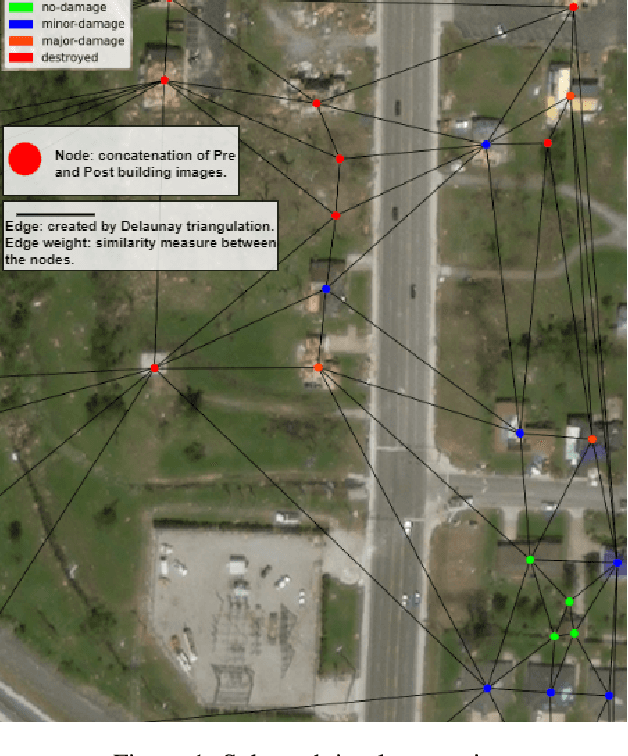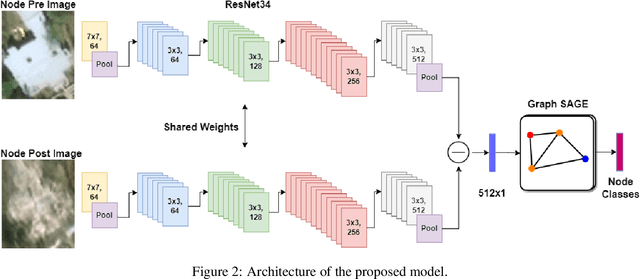Ali Ismail
Towards Cross-Disaster Building Damage Assessment with Graph Convolutional Networks
Jan 25, 2022



Abstract:In the aftermath of disasters, building damage maps are obtained using change detection to plan rescue operations. Current convolutional neural network approaches do not consider the similarities between neighboring buildings for predicting the damage. We present a novel graph-based building damage detection solution to capture these relationships. Our proposed model architecture learns from both local and neighborhood features to predict building damage. Specifically, we adopt the sample and aggregate graph convolution strategy to learn aggregation functions that generalize to unseen graphs which is essential for alleviating the time needed to obtain predictions for new disasters. Our experiments on the xBD dataset and comparisons with a classical convolutional neural network reveal that while our approach is handicapped by class imbalance, it presents a promising and distinct advantage when it comes to cross-disaster generalization.
BLDNet: A Semi-supervised Change Detection Building Damage Framework using Graph Convolutional Networks and Urban Domain Knowledge
Jan 25, 2022



Abstract:Change detection is instrumental to localize damage and understand destruction in disaster informatics. While convolutional neural networks are at the core of recent change detection solutions, we present in this work, BLDNet, a novel graph formulation for building damage change detection and enable learning relationships and representations from both local patterns and non-stationary neighborhoods. More specifically, we use graph convolutional networks to efficiently learn these features in a semi-supervised framework with few annotated data. Additionally, BLDNet formulation allows for the injection of additional contextual building meta-features. We train and benchmark on the xBD dataset to validate the effectiveness of our approach. We also demonstrate on urban data from the 2020 Beirut Port Explosion that performance is improved by incorporating domain knowledge building meta-features.
 Add to Chrome
Add to Chrome Add to Firefox
Add to Firefox Add to Edge
Add to Edge